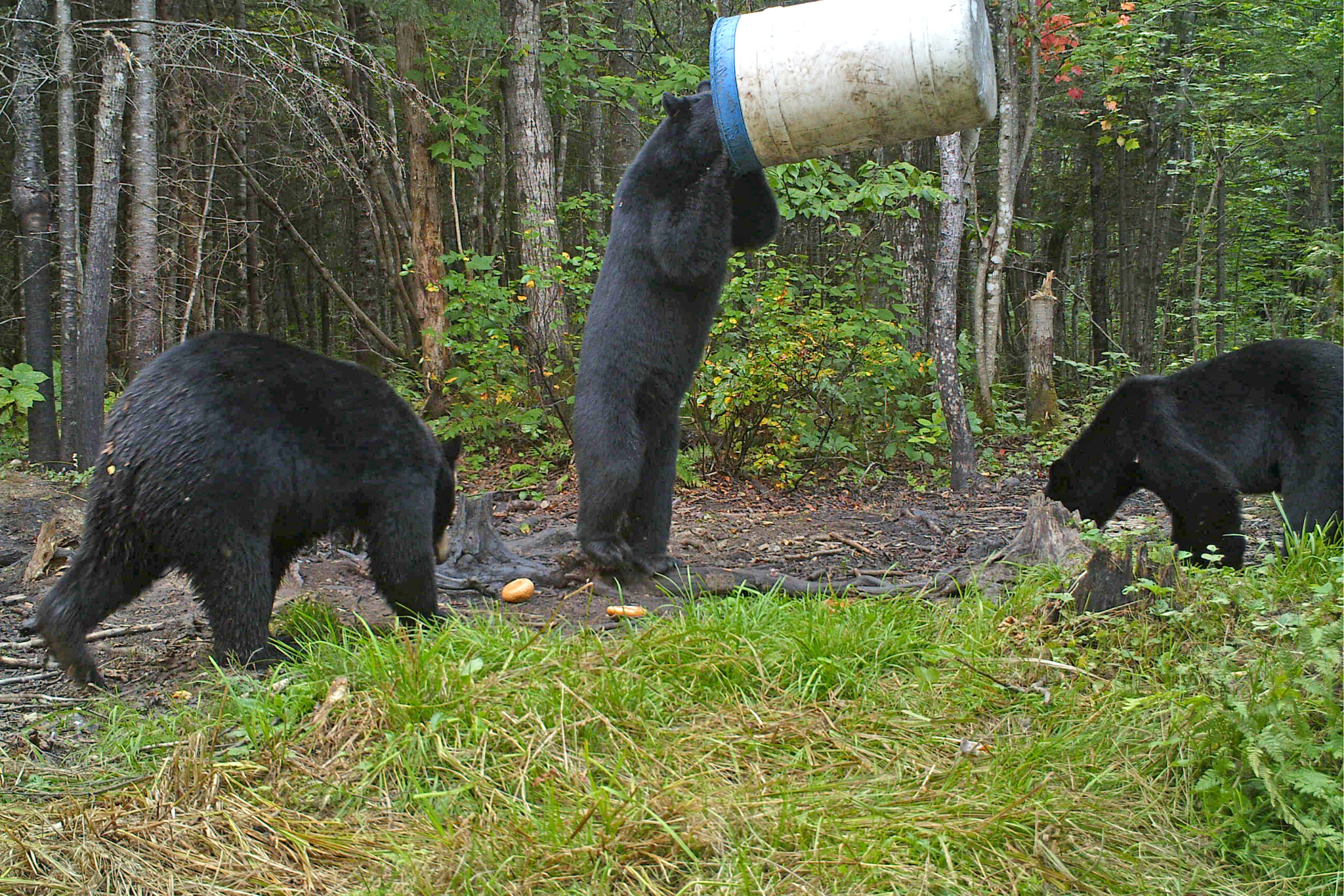
Black bear hunting begins Aug. 24 with youth day, and general hunting starts Aug. 26. Trapping season and hunting with dogs begin Sept. 1 and 9, respectively, and it is legal to tag two bruins annually, one each by hunting and trapping.
Bear populations continue to expand throughout Maine, especially in Aroostook County, and the annual harvest isn’t large enough to stem the growth, even with more sportsmen and women participating in recent years since COVID.
Elevated gas prices and higher costs of many baiting foods are very likely to decrease the number of hunters who maintain a personal bait site or two. Some will postpone baiting for a couple of weeks or more to save a bit of money and time, while others will turn to spot-and-stalk shooting of bear visiting regional grain fields, wild apple orchards, raspberry and chokeberry patches and beechnut ridges.
For those wishing to establish a bait site, it’s unlikely that a drive of more than 20 minutes would be required anywhere in Aroostook County. Many hunters utilize their own land, but it’s generally not a problem to acquire permission from regional farmers and owners of vast woodland properties. Then it’s just a matter of picking a location away from regularly used roads, ATV trails and hiking paths, and nowhere near houses, camps or even remote farm storage buildings.
Forest and fairly dense ground cover around the bait site make bear feel safer, and I try to be at least 100 yards into the woods from the dirt road or two-track where I park my vehicle to bring bait to the location. A nearby brook, pond or marshy area will help keep bear near a baiting area. If it’s necessary to clear a trail through the brush, locate a tree for the bait container and another for a tree stand. If a hunter intends to use a portable ground blind, a space needs to be created to position it at a preferred shooting distance, which varies for use of rifle, handgun or bow.

The final step is to secure a bait container to a tree with wire, cable or chain so a bear can’t haul it off into the woods. I’ve seen every size and shape from a 5-gallon pail to a 55-gallon barrel. It’s important to position the container to keep other pest animals away from the food and cover it with heavy material so only a big bear can get to it.
I hang my bait barrel from a cable suspended between two trees with the container about 5 feet off the ground. Only bears can reach the food, and I’m able to easily judge size as individual bruin stand up to secure a snack.
It’s important to use a powerful attractant scent at the bait site to accompany the smell of food the wind disperses through the woods. I hang a soccer-ball-size, bacon-scented sphere created by Bear Scents LLC of Wisconsin that lasts for weeks, slowly dissolving and sending out a delicious aroma.
There are also gels, sprays, powders, fryer oil additives and scent pads to install for the season or use at each baiting visit. There are anise, honey, bacon, strawberry, blueberry, jelly donut and dozens more flavored applications that draw bear to visit, then are carried off on their feet and fur so that other bruin will cross the scent trail, trace it back, and also visit the bait area.

Whether your bait site is for hunting food, photography or just animal watching, it’s a lot of work and fairly expensive for a full season, but it’s also very exciting and rewarding. The chances of even seeing a bear, let alone getting a shot with gun, bow or camera during regular hunting seasons, depend on a lot of variables: weather, natural food supply and hunter perseverance. So it’s time to make a choice, set up a bait site but postpone 2- or 3-weeks until just before the four week season or select another style of bear hunting.
Last year a friend of mine didn’t set up a bait sit until six days before the season opened. Work, family obligations and several unexpected hurdles caused the delay. Much to his surprise and elation, a bear was on his bait within two days of setting it up, and by the first week of hunting he had game camera photos of three different bruin visiting regularly. Despite a late start, he enjoyed a successful season, and so could you. There’s plenty of time to establish a bait site.
Despite some opinions that baiting is unsportsmanlike and an easy way to take a bear, the annual success rate remains below 25 percent. If you think about it, you’re much more likely to spot deer and moose when traveling Maine woodlands than a black bear.
Other factors that should affect considerations and have changed notably the last couple of years are unusually warm September weather and dry conditions that affect natural food sources.
Bear season is fast approaching, so decide now where, when, and how to hunt this year.







